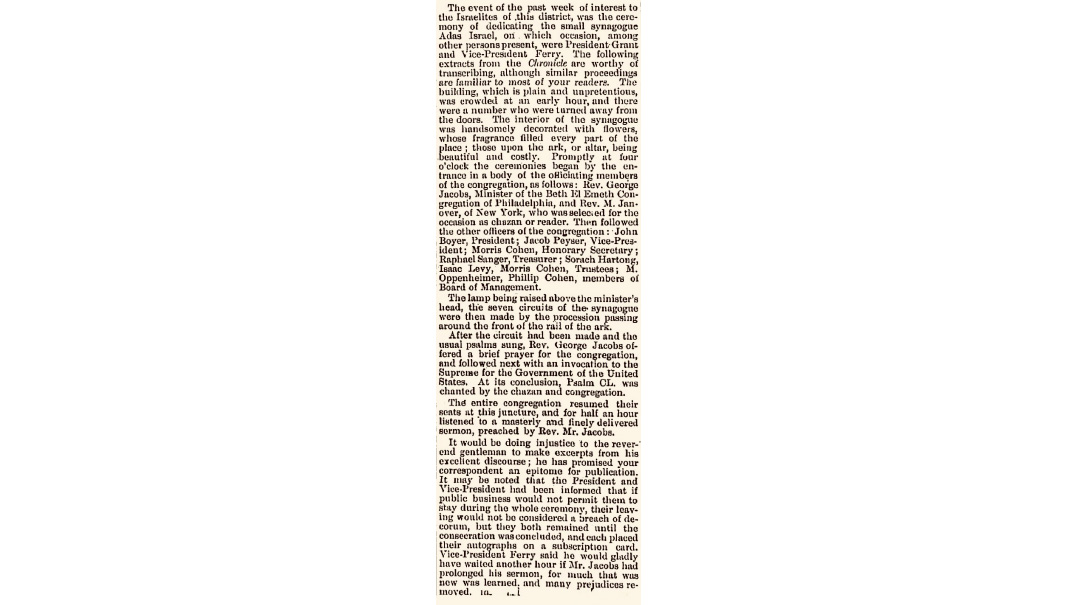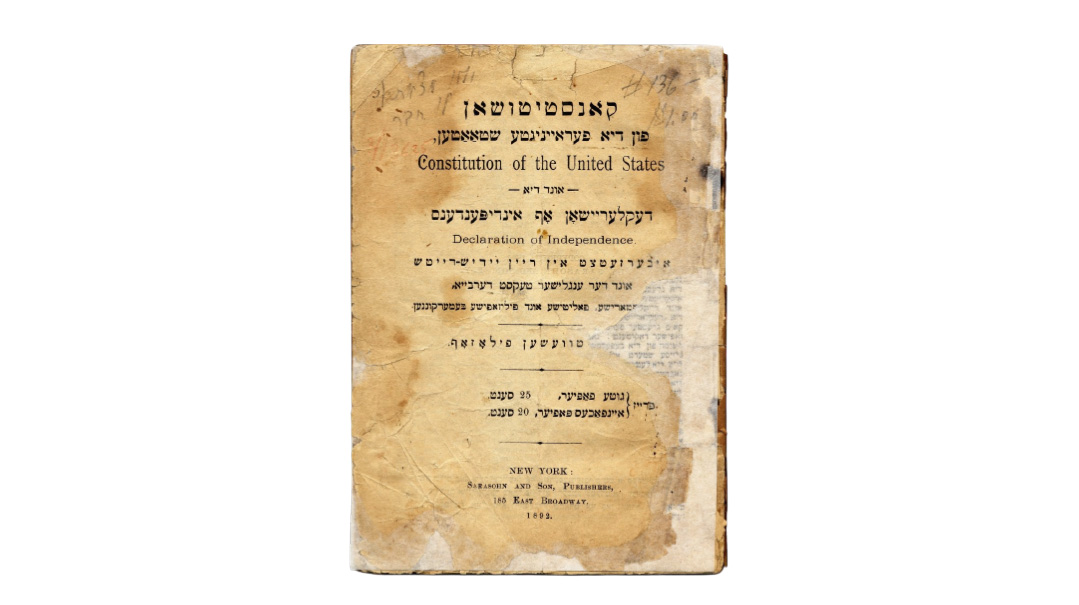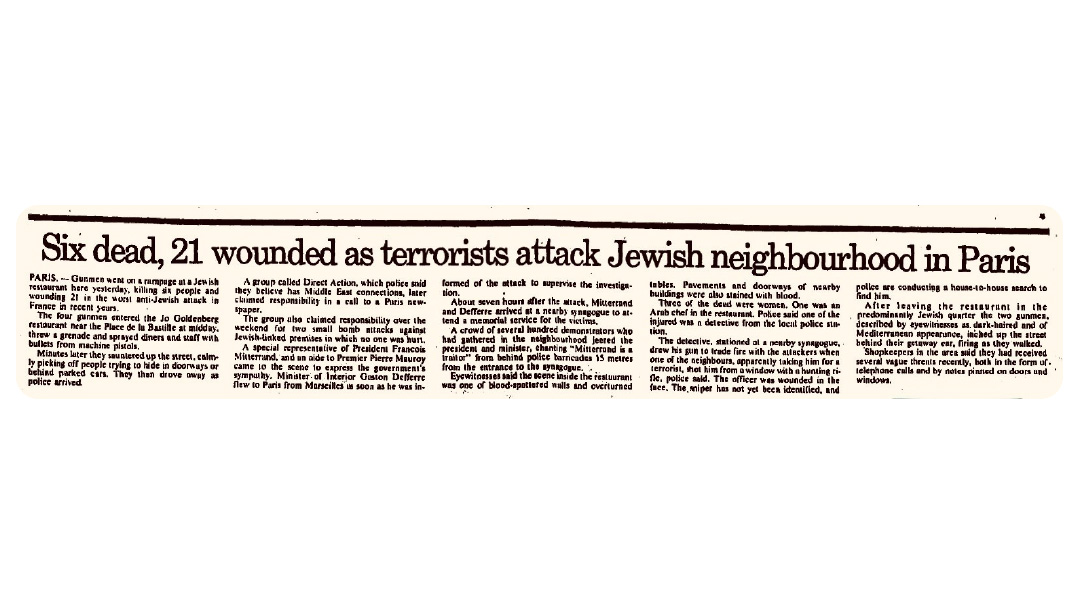The Lights of Meron
| May 2, 2023The rights to lighting the Lag B’omer fire in Meron from the Sephardic rabbinical elders of Tzfas

Title: The Lights of Meron
Location: Meron, Palestine
Document: Contract
Time: Lag B’omer 1932
Toward the end of the 18th century, Kollel Vohlyn was established in the Old Yishuv. Vohlyn, or Volhynia, was a region in today’s central and western Ukraine, and this center of Jewish life was proud to support a community of scholars in the holy cities of Teveria, Tzfas, and later Jerusalem when they coalesced into Kollel Vohlyn.
Rav Yisrael Friedman of Ruzhin assumed a leading role in the Kollel in the 1830s, overseeing fundraising, distribution of the chalukah, and settlement of disputes. Kollel Vohlyn soon dominated chassidic life in the Old Yishuv, and was the largest and richest of all the chassidic kollelim.
The Ruzhiner worked earnestly for the community’s development. Following the devastating 1837 Tzfas earthquake, he attempted to curb immigration to the Land of Israel until the community’s economic situation could be stabilized: “I hereby decree on all of acheinu bnei Yisrael in chutz la’Aretz that G-d forbid anyone should immigrate to the Holy Land unless they have financial means to support themselves for a period of three years.… Anyone who does so without such financial means should not receive any chalukah for three years unless he has my signed permission.”
Another of the Ruzhiner’s initiatives was to purchase the rights to lighting the Lag B’omer fire in Meron from the Sephardic rabbinical elders of Tzfas, who had maintained this mystical tradition for centuries. This financial transaction gave the Ruzhiner and his progeny eternal ownership of the coveted hadlakah in honor of Rabi Shimon bar Yochai, a tradition that continues until this very day.
Rav Avraham Yaakov Friedman of Sadigura succeeded his father in this role until his own passing in 1883, and was in turn succeeded by his sons Rav Yisrael and Rav Yitzchak. The latter, known as the Pachad Yitzchak, established the Boyan chassidic dynasty. He retained the leadership of Kollel Vohlyn, which included the Tiferes Yisrael shul and the Lag B’omer hadlakah in Meron.
When the Pachad Yitzchak passed away in Vienna during World War I, he was succeeded by his four sons, who established Boyan courts in Czernowitz, Lvov, Leipzig, and the Lower East Side. Though the family had owned the rights to kindling the Lag B’omer fire for over 70 years, no member of the family had ever actually done so in person. They appointed emissaries who executed the custom on their behalf.
When the Boyaner Rebbe of Czernowitz, Rav Menachem Nachum Friedman, visited the Land of Israel in the summer of 1927, he became the first rebbe of the Ruzhin-Boyan dynasty to personally light the fire in Meron on Lag B’omer. His younger brother Rav Avraham Yaakov of Lvov (Lemberg) visited the Holy Land in 1932 and became the second Boyaner Rebbe to do so. The Leipzig Boyaner Rebbe, Rav Yisrael, escaped the Nazis in 1939 and settled in Tel Aviv. As the first Boyaner Rebbe to permanently settle in Eretz Yisrael, he made the annual trek to Meron every Lag B’omer until his passing in 1951.
The sole surviving Boyaner Rebbe was Rav Mordechai Shlomo Friedman on the Lower East Side. He visited Israel on several occasions, and whenever the visit coincided with Lag B’omer, he’d exercise his family’s tradition by lighting the fire in Meron. Upon his ascension as Boyaner Rebbe and his move to Israel in the 1980s, the current Rebbe, Rav Nachum Dov Brayer, continues the tradition of his holy ancestors by commencing the Lag B’omer festivities in Meron.
Loyal Emissaries
Over the course of the many years in which the Ruzhin-Sadigura-Boyan Rebbes were unable to exercise their Meron lighting rights in person, the successive rabbis of Tzfas were their official representatives in executing this task. In the 19th century, it was Rav Shmuel Heller, who was then followed by successive generations of the Zilberman family.
In 1950, Rav Simcha Kaplan commenced his 40-year tenure as Ashkenazi chief rabbi of Tzfas. While his predecessors had been chassidim, Rav Kaplan was a Litvak and an alumnus of Remailess and Mir. He faithfully lit the Meron fire each year on Lag B’omer as the personal emissary of the Boyaner Rebbe. (When the current Boyaner Rebbe began lighting the hadlakah, he insisted on doing it together with Rav Kaplan, with both men holding the torch.)
Although other tzaddikim of the Ruzhin dynasty either visited or resided in Eretz Yisrael over the course of the 20th century, including the Rebbes of Sadigura, Chortkov, Husiatyn, and Bohush, they categorically refused to usurp the privilege of kindling the Lag B’omer fire in Meron. The consensus was that it belonged to tzaddikim of the Boyan dynasty.
Crown Jewel
Among Rav Yisrael of Ruzhin’s building initiatives was the purchase of a plot of land in the Old City of Jerusalem to build a grand shul for the members of Kollel Vohlyn. This was carried out by his proxies in the Holy Land, a father and son duo named Yisrael and Nissan Beck. It was finally completed in 1872, long after the Ruzhiner’s passing in 1850, and was named Tiferes Yisrael in his memory.
The research of Professor David Assaf was utilized in the preparation of this column.
(Originally featured in Mishpacha, Issue 959)
Oops! We could not locate your form.







